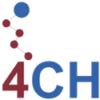Introduction
ARIADNE is a Research Infrastructure for Archaeology which promotes best practice relating to all aspects of data management, from creation to archiving. Over the last 10 years, ARIADNE has evolved into a major resource for archaeology, both applying and promoting the use of standards and best practices which can also be used across the wider cultural heritage domain.
Background
At CAA 92, Aarhus, archaeologist Henrik Jarl Hansen from the Danish National Museum proposed the idea of joining up archaeological databases across Europe to make the data more accessible for research and teaching purposes. The ARENA Project [1] put this idea into practice based on the technologies available in the early 2000’s (e.g. Z39.50 communications protocol and the Dublin Core metadata standard), and with a search facility based on where, when and what. Around ten years later, as part of the preparation phase for DARIAH, ARENA2 was developed as a portal demonstrator, now using a web services architecture.
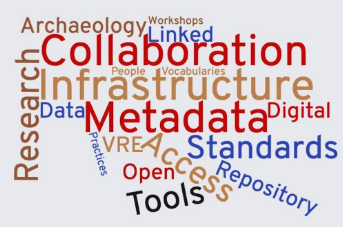
The first ARIADNE Project started in 2014 with the aim of establishing a working portal and promoting best practices for the management of archaeological data. By 2017, this had been achieved using mainly sites & monuments datasets from over 10 European countries. The follow-on project, ARIADNEplus (2019-2022), expanded the geographical scope (including Japan, USA and Argentina), the domains covered (e.g. maritime archaeology, burials, finds…) as well as the types of data. ARIADNEplus was also able to take advantage of technological advances such as the use of Linked Open Data and applied the CIDOC CRM as a backbone model, as explored in the PARTHENOS project during the interim period. Adoption of the FAIR Data Management principles helped to refine and improve the ARIADNEplus data model (the AO-CAT), utilising the Getty Art an Architecture Thesaurus for subject classification purposes and PeriodO for time periods. By the end of the project in December 2022, ARIADNEplus had established a strong community across Europe and beyond as well as a sophisticated Portal with a catalogue containing metadata for around 4m resources, as well as several supporting services. In order to continue this work, the ARIADNE Research Infrastructure AISBL was established as a non-profit membership organisation to continue to serve the archaeological community.
The FAIR Data Principles
The FAIR Data Principles first came to the attention of the archaeological community when the ‘FAIR Guiding Principles for scientific data management and stewardship’ [1] were published in Scientific Data in March 2016. FAIR stands for Findability, Accessibility, Interoperability, and Reuse of digital assets which resonated with the aims of ARIADNE and the wider archaeological community and became one of the key objectives of the ARIADNEplus Project.

Extracts from the FAIRiFY Guidelines in some of the languages available
The “Guidelines to FAIRify data management and make data reusable” were initially developed by DANS in the PARTHENOS project as a set of 20 recommendations and translated into five other major European languages. ARIADNE added a further three versions in Czech, Portuguese and Turkish, making all versions available via Zenodo. These straightforward recommendations can be used by anyone involved with data management for cultural heritage.
Opening up access to archaeological data
One of the main objectives of ARIADNE is to encourage holders of archaeological data to open up their archives for research and reuse, i.e. making the data “FAIR”. The Portal Catalogue contains metadata about each resource that includes information about location, dates and/or associated time period as well as a description and other relevant data such as the Publisher, contacts, etc. All the metadata in the Portal is available for reuse with copyright varying from Open Access to CC BY-NC 4.0 with many of the target resources (i.e. reports, datasets) also freely available.
As an exemplar for best practices in archaeology, widely used international standards are used for cataloguing the metadata in the Portal. The new AO-CAT was fully compliant with CIDOC-CRM whilst remaining flexible enough to accommodate new ontologies to cover the new archaeological domains as these were added. PeriodO is used to describe historical periods by region thus getting round the problem of different time periods applying to commonly used terms such as “medieval” or “iron age” which vary from country to country. The Getty Art and Architecture Thesaurus (Getty AAT) is used as a base ontology to categorise the resources. The interactive map filter allows specific areas of interest to be defined regardless of national boundaries which may not have existed in the past. Finally, the use of GraphDB, an RDF database, ensures that all the resources are Linked Open Data, are machine-readable and can be queried easily.
One of the most challenging aspects for new providers is mapping their existing metadata to the AO-CAT in order to provide meaningful results when searched for in the Catalogue. However, several data providers have found the actual process of preparing their metadata and making adjustments beneficial as it this has helped them improve their data quality and visibility whilst ensuring compliance with internationally used standards.
The ARIADNE Portal
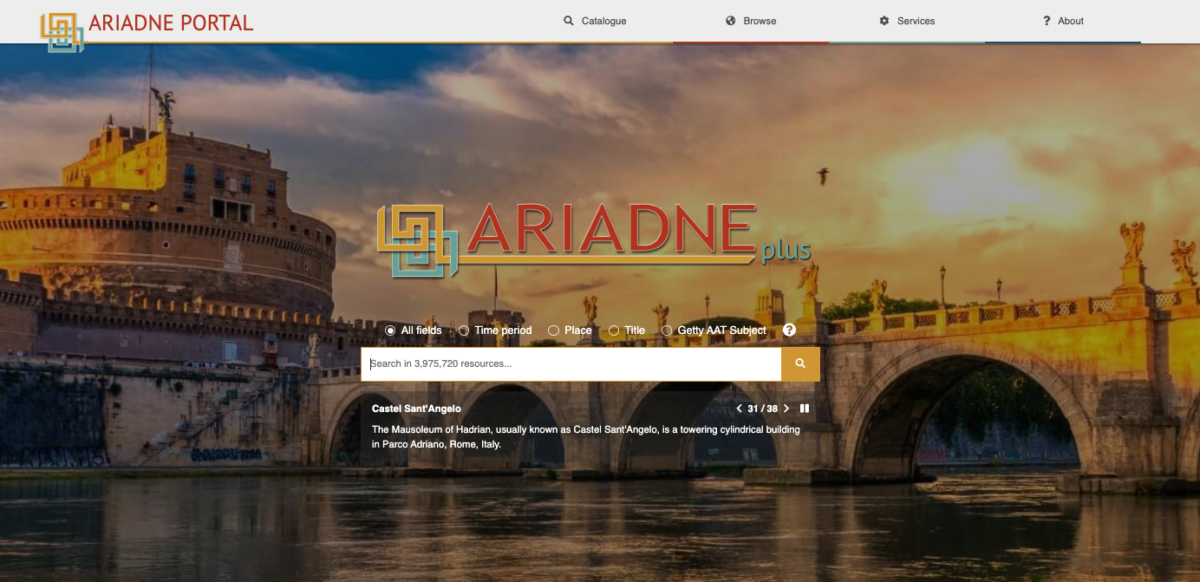
The ARIADNE Portal enables researchers (and any interested end user) to search for data records in the Catalogue based on What, Where and When along with several filters designed to help narrow down the returned results:
- What – text search based on key metadata fields such as the Title and Description.
- When – a defined time period, either with a start and end date or a recognized name such as the Iron Age.
- Where – using a defined area on a map, this finds all records with matching geo-coordinates.
The filters include the resource type (e.g. site and monument, artefact, etc.), Getty AAT classifications, the Publisher and Contributor and dating (via PeriodO) which can be applied in various combinations in order to refine the results.
One major achievement is that due to the inclusion of Portable Finds records (from the UK, Netherlands, Denmark, Finland and the Czech Republic), it has become possible to connect artefacts with sites and monuments (i.e. displayed on the Where map). Furthermore, areas with higher finds densities may indicate previously unidentified sites of interest worthy of further investigation.
As previously discussed, the Catalogue design is based upon accepted standards so that in addition to providing a user-friendly interface, more expert users can use some of the additional services provided to run their own queries on the RDF dataset. In addition, a key feature is flexibility that allows different types and collections of datasets to appear in the Catalogue where a minimum level of data is required and where providers can supply as much additional data as they wish, even links to complete reports. As such, the technology is highly portable and the UnPath’d Waters Project which is dedicated to maritime archaeology around the UK is using its own version of the Portal.
Data Management Plans
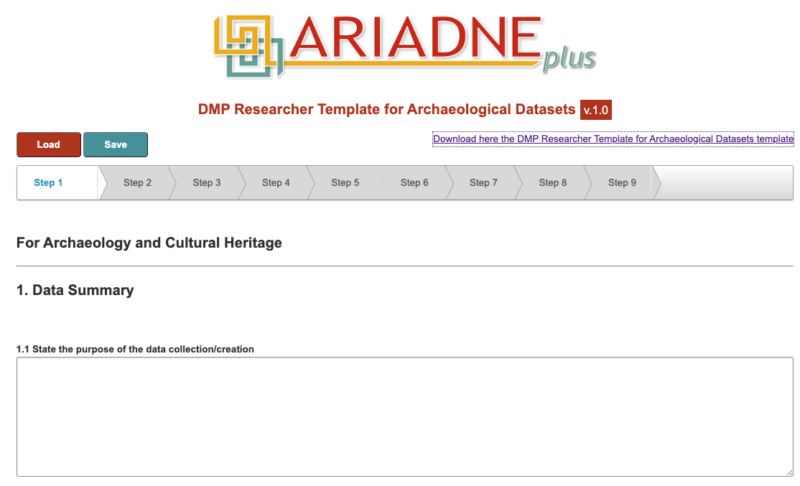
Data Management Plans (DMP) are often a requirement for obtaining funding and as part of the research work flow to ensure that archaeologists manage their data responsibly and comply with the FAIR Data Principles, meaning that data should be Findable, Accessible, Interoperable and Reusable.
However, DMPs tend to vary across funders and universities so the ARIADNEplus project developed some online tools to assist archaeologists as follows:
- A Protocol for Archaeological Data Management, based on the Science Europe guide for research data management (including directions for evaluating DMPs). Many research councils and universities in Europe, including the European Commission for the Horizon Europe programme, accept the Science Europe core requirements for making a data management plan (DMP). This protocol can be considered as a standard DMP for archaeological research based on the principle of “comply or explain”. If you deviate from the standard compliance or need to give further details, the protocol provides you the opportunity to make supplementary comments.
- The ARIADNEplus DMP Researcher Template for Archaeological Datasets based on the Horizon 2020 requirements. The template addresses researchers in the archaeological domain and is tailored to the community needs, including standards and tools commonly used in their daily practices. With its structure and the suggested answers, the DMP helps researchers think about what to do with their research data, how to collect and to keep track of it, thus helping to identify the support, standards and services needed. It is a useful instrument to plan for short- and long-term storage, and to prepare data for re-use by acknowledging the sources and intellectual contributions according to legal terms and conditions that may include limited privileged use.
- The new Horizon Europe Template for Archaeological Datasets which provides guidance and suggested answers to archaeologists including standards and tools commonly used in their daily practices.
- A harmonized Guide for Archaeological Data Management Planning that can be consulted for both DMP templates and the protocol.
Access to the tools and further information can be found here.
Guides to Good Practice
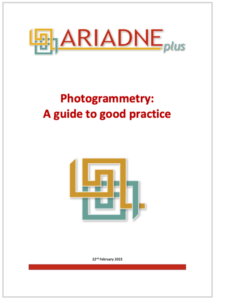 The Archaeology Data Service at the University of York published a first set of Good Practice Guides several years ago to assist archaeologists with the issue of data preservation and archiving. As new technologies have been adopted with new data formats, the Guides were updated by the ARIADNE Project (2014-18) to reflect the increasing range of data outputs used by archaeologists. ARIADNEplus made some further updates to cover new technological developments and broaden the target audience so that the Guides can be used by anyone who has to deal with the types of data covered:
The Archaeology Data Service at the University of York published a first set of Good Practice Guides several years ago to assist archaeologists with the issue of data preservation and archiving. As new technologies have been adopted with new data formats, the Guides were updated by the ARIADNE Project (2014-18) to reflect the increasing range of data outputs used by archaeologists. ARIADNEplus made some further updates to cover new technological developments and broaden the target audience so that the Guides can be used by anyone who has to deal with the types of data covered:
- Documents and digital texts
- Databases and spreadsheets
- Digital Audio
- Digital Video
- Photogrammetry
- Raster images
- Vector images
All the Guides are available here.
The Future
ARIADNE is now established as a Research Infrastructure for archaeology and has a growing membership along with an established community. Its objectives are to continue to promote best practice and the adoption of standards and to support organisations who require assistance through the provision of training and workshops. Data will continue to be uploaded and updated in the Catalogue and new providers encouraged to contribute their datasets in order to improve the scope and depth available. The ARIADNE RI AISBL has already been successful in obtaining funding through a COST Innovators Grant Award and a Horizon RIA Action which will enable the organisation to pursue its objectives for the foreseeable future.
References
- ARENA (Archaeological Records of Europe: Networked Access) combined services from Poland, Romania, Denmark, Iceland, Norway and the United Kingdom as Dublin Core (DC) standard records based on the Z39.50 protocol. This project allows for a cross-search based on WHERE, WHAT and WHEN parameters outputting the data as HTML.
- The FAIR Guiding Principles for scientific data management and stewardship, 16 March 2016, Nature Journal – https://www.nature.com/articles/sdata201618
